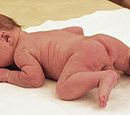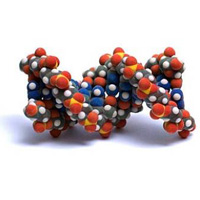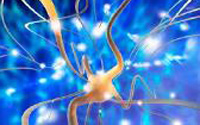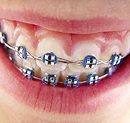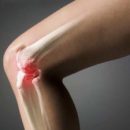What caused the disease Galaktozhemia? What are the symptoms of this disease? How to treat him? Read in this article.
Content
Galaktosemia
The disease was first described in 1908., At the same time, the child was very exhausted, he had a liver and spleen, and in the urine, Galactose was determined, which disappeared immediately after the food stopped giving milk.
Causes
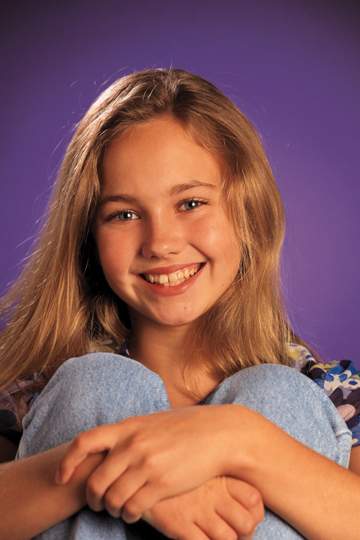
With galactosemia, the amount of enzyme splitting galactose in the liver and in red blood tales (red blood cells) is reduced (only 2 is absorbed—3% galactose). In itself, the lack of an enzyme for the disease does not lead, but when the milk-heated galactose products (Galactose-1-phosphate) are accumulated in the blood, kidneys, brain, tongue, adrenal glands, the heart, lens, and have a damaging effect on organs and on the body as a whole.
The content of glucose-1-phosphate in red blood cells rises in 10—20 times, which is why oxygen transport decreases in 20—30 times, breathing tissues. The blood level of sugar is reduced in the blood, which is the cause of the growth and development of children. The deposition of non-separable products for the exchange of galactose in lens eye leads to the development of cataracts. The heavy forms of the flow of galactosemia can be related to the fact that the body of the child has been subjected to the damaging action of the Galactose exchange products already intrauterine when pregnant has eaten milk.
Manifestations
With a severe form of a galactosemia, vomiting develops with each milk, diarrhea, the body weight is quickly reduced. Almost always observed jaundice, but its symptoms can pass, as in physiological jaundice, for 2—3 weeks after birth, and can be saved up to 8 months. The liver increases gradually and can achieve large sizes. Spleen also increases, but little. The belly will be taken, and the extended veins are visible on it.
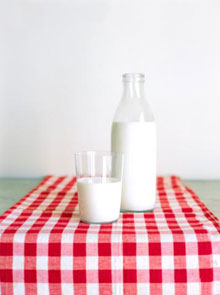 Children are languishing, refuse to eat. More than 50% of cases, cataract develops, which can be detected at the end of the first month of the child's life. Tendon reflexes are reduced, and the child lagging starts to keep his head. Combining eyeballs and even convulsions can be observed. Severe form, as a rule, develops in the first weeks and even the days of the child's life. With a light course of the disease, only vomiting is possible after the milk taking. Later the liver increases and cataract appears. The child is lagging behind in the mass and growth, later begins to keep his head and sit.
Children are languishing, refuse to eat. More than 50% of cases, cataract develops, which can be detected at the end of the first month of the child's life. Tendon reflexes are reduced, and the child lagging starts to keep his head. Combining eyeballs and even convulsions can be observed. Severe form, as a rule, develops in the first weeks and even the days of the child's life. With a light course of the disease, only vomiting is possible after the milk taking. Later the liver increases and cataract appears. The child is lagging behind in the mass and growth, later begins to keep his head and sit.
The asymptomatic (asymptomatic) form of galactosemia is described, in which the disease is found randomly with a biochemical survey of blood. After that, parents can remember that the child does not like milk and avoids it to take. Cases are described when a breast child refused Mother's milk. Nevertheless, even at easy course, the products of the exchange of galactose act damagingly to the liver, and therefore notes a tendency to its chronic diseases.
In order to make a diagnosis of galactosemia, it is necessary to obtain a laboratory confirmation. The level of galactose in the blood increases to 0.8 g / l. Using the method of galactose chromatography, the urine is found in the urine. Samples with loading galactose increase its amount in the blood for several hours, 40—50% of galactose is derived from the urine. The load with glucose gives a normal reaction (normal blood sugar curve).
The forecast of the disease in acute flow is unfavorable: death may come shortly after birth from exhaustion (cachexia) and liver cirrhosis. If the child stays alive, he develops blindness due to cataracts and dementia, death occurs in a few months from the liver cirrhosis.
The forecast for severe cases is improving with dietherapy, with light shapes, the disease is compatible with life.
Diet pattern
If treatment has begun from the first days of life, cirrhosis does not develop, cataracts and oligophrenia (dementia) can be avoided.
 If dietherapy begins in a later date, when the child already has a lag in the development and pathology of the liver, the disease can only be stopped, not allowing further deterioration. However, it is no longer necessary to count on recovery.
If dietherapy begins in a later date, when the child already has a lag in the development and pathology of the liver, the disease can only be stopped, not allowing further deterioration. However, it is no longer necessary to count on recovery.
Treatment is carried out for 3 years a special diet in which there is no galactose. The complexity of therapeutic nutrition lies in the fact that depriving the child of breast milk falls from the period of newborn, t.E. Before the first symptoms of the disease appear. This is due to severe complications, which, developing, is no longer cured.
Breast children give special mixtures without lactose: soyaval, nutramgen (protein hydrolyzate, enriched with vegetable oil, sucrose, vitamins, minerals), lactose-free embroidence. You can prepare such a mixture based on eggs with sugar, margarine and rice flour.
In severe cases, replaced blood transfusion, plasma, special drug treatment (potassium orotat is prescribed, ATP, Cocarboxylase, Vitamins). In cases where such diseases are known in the family, milk, as well as peas, beans, lentils, soy, young potatoes, cocoa, chocolate, liver and other sub-products are eliminated.
Principles of diet and therapy
-
Early appointment of diet food (with first feeding of a newborn, if there is a suspicion of this disease).
- The presence of a full-fledged substitute for female milk, not containing lactose.
- Inclusion in the diet of the child as it grows a variety of permitted products.
-
Restricting the use of milk and dairy products in pregnant women who have a high risk of birth of a child with galactosemia.
The main component of the low-coatous mixture is dry soluble milk protein casein. It is obtained from skimmed milk by precipitation of casein, then dissolving it with lemon-acid salts and drying with spraying.
Such mixtures also consist of corn oil and dairy fats in a ratio of 25:75, sucrose, malt extract or dextrin-maltose, starch, flour for children and dietary food, vitamins A, D, E, RR, C, group B, macro - and trace elements (iron, sodium, potassium, calcium, phosphorus, magnesium).
Lowlyolastic mixture — This powder, in appearance and taste resembling dry milk.
Preparation of a 12% mixture: take 12 g of dry powder, add 100 ml of warm boiled water, thoroughly stir up to a homogeneous consistency, bring to a boil, pour into sterile bottles and cool. Store follow in the refrigerator.
Low-Colton products are several species.
- Low-column milk mixture with malt extract (for children up to 2 months).
- Low-column milk mixture with flour (rice, buckwheat, oatmeal) and the belonging for children over 2 months old.
- Low-column milk for children over 6 months old and as a milk substitute for cooking.
Sample menu
Menu (in grams) using low-coarse milk with galactosemia (age — 7 months, weight — 8 kg):
First feeding (6.00 h). Low-Colton (12%) Milk — 200.
Second feeding (10.00 h). Porridge on low-column (12%) milk — 150, foam oil — 5, Yolk — 1/2 pieces, bread — 50, apple puree — fifty.
Third feeding (14.00 h). Bouillon — 30, puree vegetable on low-column (12%) milk — 150, vegetable oil — 5, puree meat — 30, bread — 5, fruit kissel — thirty.
Fourth feeding (18.00 h). Low-Colton (12%) Milk — 200, juice apple — 50, crackers — five.
Fifth feeding (22.00 h). Low-Colton (12%) Milk — 200.
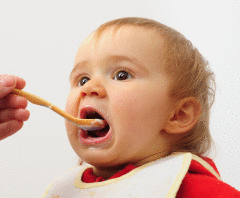 With the slightest suspicion of lactose intolerance of the newborn, they are transferred to a low-column mixture with a malt extract until the diagnosis is finally removed or delivered.
With the slightest suspicion of lactose intolerance of the newborn, they are transferred to a low-column mixture with a malt extract until the diagnosis is finally removed or delivered.
If the diagnosis during a biochemical blood study was not confirmed, then the child begins to get breast milk again. If the diagnosis is still installed correctly, then before two months of age, the child should receive a low-column mixture with a malt extract, up to 6 months — Low-column mixture with flour, and from 6 months — Lowlyolastic milk.
Daily amount of dairy mixtures, breeding of feedings and deadlines — All this is held on the standards established for healthy children, with the exception of by-products, legumes, coffee, cocoa, chocolate. Children over the year are allowed fruit candies, marmalade, jams.
Diet and therapy is carried out for 3 years under the supervision of a pediatrician, a nutritionist, an oculist, a neuropathologist, under the control of the biochemical analysis of blood on galactose. Children are usually well tolerated and willingly drink low-column mixtures and use dishes prepared on their basis.

